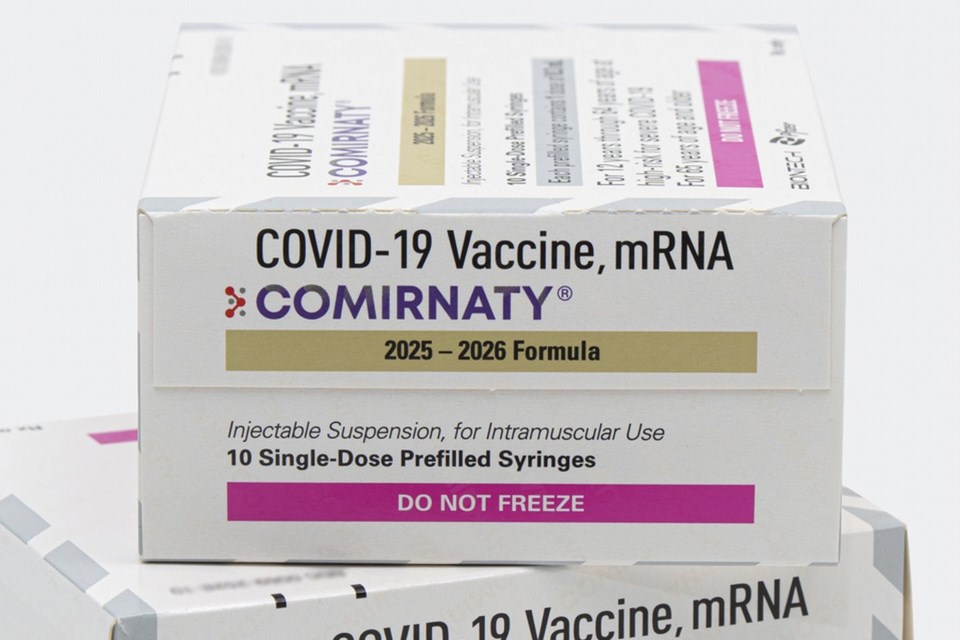Health
COVID-19 Vaccination Challenges Increase for Many in 2024

The landscape of COVID-19 vaccinations has become increasingly complex as individuals face a variety of factors influencing their decision to receive the vaccine in 2024. For many, questions surrounding eligibility, insurance coverage, and access to healthcare professionals have made the choice more intricate than in previous years.
The evolving nature of COVID-19 vaccines includes updated formulations aimed at addressing new variants. As of March 2024, the World Health Organization (WHO) has recommended that individuals receive an updated booster to enhance immunity against emerging strains. This guidance aims to protect vulnerable populations, including those over the age of 65 and individuals with pre-existing health conditions.
For younger adults, the decision to get vaccinated hinges on several factors, including personal health and access. Many people in their twenties and thirties may feel less urgency, leading to a potential decline in vaccination rates within this demographic. According to a recent survey conducted by the Centers for Disease Control and Prevention (CDC), only 45% of adults aged 18-34 reported plans to receive the booster this year, reflecting a significant drop from previous vaccination campaigns.
Insurance coverage is another critical element influencing vaccination decisions. In many regions, the cost of the vaccine may not be fully covered, particularly for those under employer plans or those without comprehensive insurance. This has led to increased disparities in vaccination rates, particularly in lower-income communities. Reports indicate that individuals without insurance are less likely to seek out vaccinations, with some citing costs as a barrier.
Access to healthcare professionals also plays a pivotal role in vaccination efforts. Many individuals express difficulty in locating providers who offer the COVID-19 vaccine. While large health systems often provide vaccines, smaller clinics may not have the necessary resources or may be experiencing supply issues. The American Medical Association (AMA) has urged local health departments to ensure that vaccines are available in all communities, particularly those that are underserved.
Public health officials emphasize the importance of addressing these challenges to improve vaccination rates. They advocate for enhanced communication strategies to educate the public about the benefits of vaccination and to provide clear information on where and how to receive the vaccine.
As the vaccination landscape continues to evolve, individuals are encouraged to consult with healthcare professionals to determine the best course of action based on their personal health needs and circumstances. The complexities surrounding COVID-19 vaccinations are likely to persist, highlighting the need for ongoing public health efforts to ensure equitable access to immunization.
In summary, the decision to receive a COVID-19 vaccine in 2024 is shaped by various factors, including age, insurance coverage, and access to healthcare services. As health authorities work to navigate these challenges, it is crucial for communities to engage with local health resources to overcome barriers and improve vaccination uptake.
-

 Education2 months ago
Education2 months agoBrandon University’s Failed $5 Million Project Sparks Oversight Review
-

 Lifestyle3 months ago
Lifestyle3 months agoWinnipeg Celebrates Culinary Creativity During Le Burger Week 2025
-

 Science3 months ago
Science3 months agoMicrosoft Confirms U.S. Law Overrules Canadian Data Sovereignty
-

 Health3 months ago
Health3 months agoMontreal’s Groupe Marcelle Leads Canadian Cosmetic Industry Growth
-

 Science3 months ago
Science3 months agoTech Innovator Amandipp Singh Transforms Hiring for Disabled
-

 Technology3 months ago
Technology3 months agoDragon Ball: Sparking! Zero Launching on Switch and Switch 2 This November
-

 Education3 months ago
Education3 months agoRed River College Launches New Programs to Address Industry Needs
-

 Technology3 months ago
Technology3 months agoGoogle Pixel 10 Pro Fold Specs Unveiled Ahead of Launch
-

 Technology1 month ago
Technology1 month agoDiscord Faces Serious Security Breach Affecting Millions
-

 Business2 months ago
Business2 months agoRocket Lab Reports Strong Q2 2025 Revenue Growth and Future Plans
-

 Science3 months ago
Science3 months agoChina’s Wukong Spacesuit Sets New Standard for AI in Space
-

 Education3 months ago
Education3 months agoAlberta Teachers’ Strike: Potential Impacts on Students and Families
-

 Technology3 months ago
Technology3 months agoWorld of Warcraft Players Buzz Over 19-Quest Bee Challenge
-

 Business3 months ago
Business3 months agoNew Estimates Reveal ChatGPT-5 Energy Use Could Soar
-

 Business3 months ago
Business3 months agoDawson City Residents Rally Around Buy Canadian Movement
-

 Education3 months ago
Education3 months agoNew SĆIȺNEW̱ SṮEȽIṮḴEȽ Elementary Opens in Langford for 2025/2026 Year
-

 Technology1 month ago
Technology1 month agoHuawei MatePad 12X Redefines Tablet Experience for Professionals
-

 Technology3 months ago
Technology3 months agoFuture Entertainment Launches DDoD with Gameplay Trailer Showcase
-

 Business3 months ago
Business3 months agoBNA Brewing to Open New Bowling Alley in Downtown Penticton
-

 Technology3 months ago
Technology3 months agoInnovative 140W GaN Travel Adapter Combines Power and Convenience
-

 Technology3 months ago
Technology3 months agoGlobal Launch of Ragnarok M: Classic Set for September 3, 2025
-

 Science3 months ago
Science3 months agoXi Labs Innovates with New AI Operating System Set for 2025 Launch
-

 Technology3 months ago
Technology3 months agoNew IDR01 Smart Ring Offers Advanced Sports Tracking for $169
-

 Technology3 months ago
Technology3 months agoDiscover the Relaxing Charm of Tiny Bookshop: A Cozy Gaming Escape










